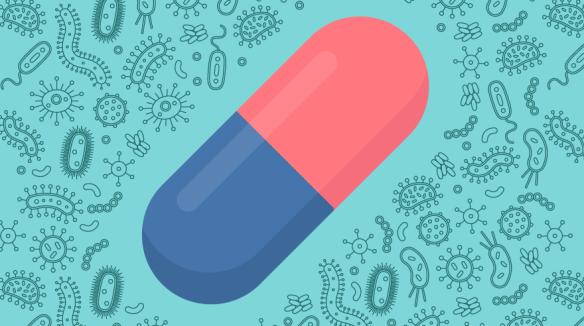ANTIBIOTIC CONSUMPTION RATES

Disclaimer: Copyright infringement not intended.
Context
- Global antibiotic consumption rates increased by 46% in the last two decades, according to a study covering 204 countries from 2000 to 2018, and published in the Lancet Planetary Health by the Global Research on Antimicrobial Resistance (GRAM) Project.
The key findings
- 10-fold: Variation between countries in total antibiotic consumption rates, ranging from as low as 5 DDD to 45.9 DDD per 1000 population per day.
- 46% up: Between 2000 and 2018, global antibiotic consumption rates increased from 9.8 to 14.3 DDD per 1000 population per day).
- 76%: Increase observed between 2000 and 2018 in low- and middle-income countries (from 7.4 to 13.1 DDD per 1000 per day). In high-income countries, consumption rates remained stable.
- 116%: Increase in antibiotic consumption rates in South Asia. The second largest increase was in the North Africa and Middle East region (111%).
Concerns
- Antibiotics are now becoming ineffective as many infectious diseases have ceased to respond to antibiotics.
- Common bugs have developed a variety of mechanisms to develop antimicrobial resistance (AMR).
Reasons behind antimicrobial resistance (AMR)
- Indiscriminate use of antibiotics.
- It is a man-made disaster. Irresponsible use of antibiotics is rampant in human health, animal health, fisheries, and agriculture. They are used as growth promoters in animals.
- Over two-thirds of the antibiotics manufactured by the pharmaceutical industry are used as growth promoters for poultry and cattle.
- The common public purchases more than half without a doctor’s prescription, according to WHO.
- The pipeline for the discovery, development, and dissemination of new antibiotics has virtually dried out.
- No new class of antibiotics has been discovered in the past three decades.
Impact of antimicrobial resistance (AMR)
- It has the potential to make fatal even minor infections.
- Complex surgeries such as organ transplantation and cardiac bypass might become difficult to undertake because of untreatable infectious complications that may result post-surgery.
- Inaction in containing AMR is likely to result in annual mortality reaching 10 million people and a 3.5% fall in global GDP by 2050.
Government Approach
- The Sustainable Development Goals have articulated the importance of containing AMR.
- Inter-country development agencies (WHO, FAO, and World Organisation for Animal Health) developed a Global Action Plan on AMR.
- India developed its National Action Plan on AMR (NAP) in 2017. It is based on the One Health approach, which means that human health, animal health, and the environment sectors have equal responsibilities and strategic actions in combating AMR.
- There is a need for higher coordination between the state authorities and the centre as health is state subject.
- The FAO has assisted India in forging the Indian Network for Fishery and Animals Antimicrobial Resistance for the generation of reliable data on the magnitude of the problem and monitoring trends in response to control activities.
- There is an urgent need to augment capacity for regulatory mechanisms, infection control practices, and diagnostics support.



1.png)
